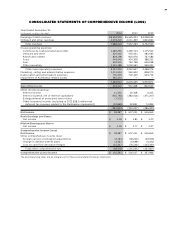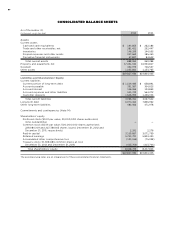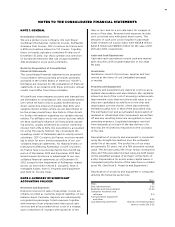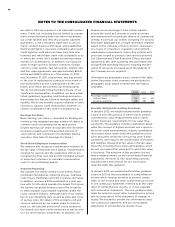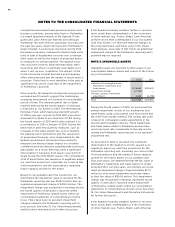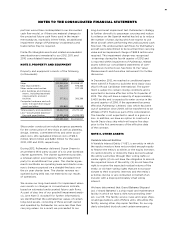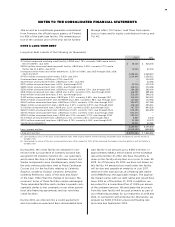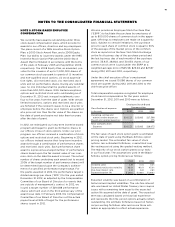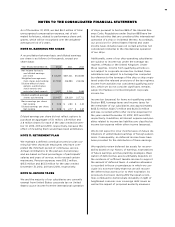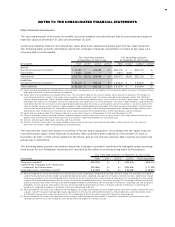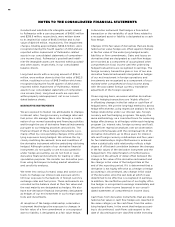Royal Caribbean Cruise Lines 2012 Annual Report Download - page 80
Download and view the complete annual report
Please find page 80 of the 2012 Royal Caribbean Cruise Lines annual report below. You can navigate through the pages in the report by either clicking on the pages listed below, or by using the keyword search tool below to find specific information within the annual report.
76
NOTES TO THE CONSOLIDATED FINANCIAL STATEMENTS
competitive environment and general economic and
business conditions, among other factors. Pullmantur
is a brand targeted primarily at the Spanish, Portu-
guese and Latin American markets and although
Pullmantur has diversified its passenger sourcing over
the past few years, Spain still represents Pullmantur’s
largest market. As previously disclosed, during 2012
European economies continued to demonstrate insta-
bility in light of heightened concerns over sovereign
debt issues as well as the impact of proposed auster-
ity measures on certain markets. The Spanish econ-
omy was more severely impacted than many other
economies and there is significant uncertainty as to
when it will recover. In addition, the impact of the
Costa Concordia incident has had a more lingering
effect than expected and the impact in future years is
uncertain. These factors were identified in the past as
significant risks which could lead to the impairment
of Pullmantur’s goodwill.
More recently, the Spanish economy has progressively
worsened and forecasts suggest the challenging
operating environment will continue for an extended
period of time. The unemployment rate in Spain
reached 26% during the fourth quarter of 2012 and
is expected to rise further in 2013. The International
Monetary Fund, which had projected GDP growth
of 1.8% a year ago, revised its 2013 GDP projections
downward for Spain to a contraction of 1.3% during
the fourth quarter of 2012 and further reduced it to
a contraction of 1.5% in January of 2013. During the
latter half of 2012 new austerity measures, such as
increases to the Value Added Tax, cuts to benefits,
the phasing out of exemptions and the suspension
of government bonuses, were implemented by the
Spanish government. We believe these austerity
measures are having a larger impact on consumer
confidence and discretionary spending than previously
anticipated. As a result, there has been a significant
deterioration in bookings from guests sourced from
Spain during the 2013 WAVE season. The combination
of all of these factors has caused us to negatively adjust
our cash flow projections, especially our closer-in Net
Yield assumptions and the expectations regarding
future capacity growth for the brand.
Based on our updated cash flow projections, we
determined the implied fair value of goodwill for the
Pullmantur reporting unit was $145.5 million and rec-
ognized an impairment charge of $319.2 million. This
impairment charge was recognized in earnings during
the fourth quarter of 2012 and is reported within
Impairment of Pullmantur related assets within our
consolidated statements of comprehensive income
(loss). There have been no goodwill impairment
charges related to the Pullmantur reporting unit in
prior periods. See Note 13. Fair Value Measurements
and Derivative Instruments for further discussion.
If the Spanish economy weakens further or recovers
more slowly than contemplated or if the economies
of other markets (e.g. France, Brazil, Latin America)
perform worse than contemplated in our discounted
cash flow model, or if there are material changes to
the projected future cash flows used in the impair-
ment analyses, especially in Net Yields, an additional
impairment charge of the Pullmantur reporting unit’s
goodwill may be required.
NOTE 4. INTANGIBLE ASSETS
Intangible assets are reported in other assets in our
consolidated balance sheets and consist of the follow-
ing (in thousands):
Indefinite-life intangible asset—
Pullmantur trademarks and
trade names
Impairment charge () —
Foreign currency translation
adjustment ()
Total
During the fourth quarter of 2012, we performed the
annual impairment review of our trademarks and
trade names using a discounted cash flow model and
the relief-from-royalty method. The royalty rate used
is based on comparable royalty agreements in the
tourism and hospitality industry. These trademarks
and trade names relate to Pullmantur and we have
used a discount rate comparable to the rate used in
valuing the Pullmantur reporting unit in our goodwill
impairment test.
As described in Note 3. Goodwill, the continued
deterioration of the Spanish economy caused us to
negatively adjust our cash flow projections for the
Pullmantur reporting unit, especially our closer-in Net
Yield assumptions and the timing of future capacity
growth for the brand. Based on our updated cash
flow projections, we determined that the fair value of
Pullmantur’s trademarks and trade names no longer
exceeded their carrying value. Accordingly, we recog-
nized an impairment charge of approximately $17.4
million to write down trademarks and trade names
to their fair value of $204.9 million. This impairment
charge was recognized in earnings during the fourth
quarter of 2012 and is reported within Impairment
of Pullmantur related assets within our consolidated
statements of comprehensive income (loss). See Note
13. Fair Value Measurements and Derivative Instruments
for further discussion.
If the Spanish economy weakens further or recovers
more slowly than contemplated or if the economies
of other markets (e.g. France, Brazil, Latin America)



